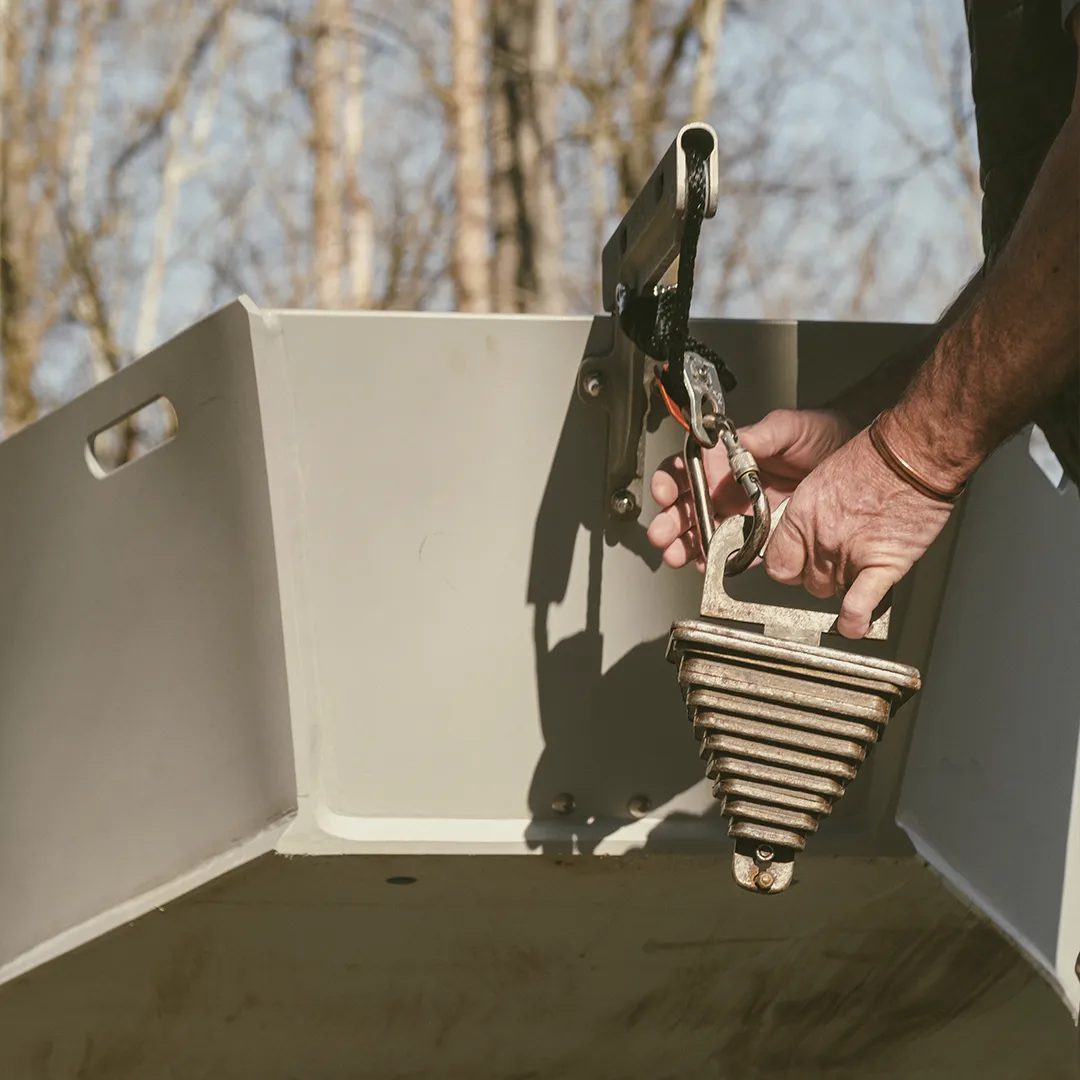Choosing The Right Drift Boat Anchor
March 18, 2024 | Drift Boat Accessories

Drift boats navigate many types of waterways, so anchors are not one-size-fits-all; they come in various types, each with its own advantages and disadvantages. Let’s dive into the world of drift boat anchors to understand their differences and which might be the best fit for your next adventure.
Anchor Price – Invest In A Good Anchor
Look, we know these things can get expensive. Whether you’re a full-time guide or a recreational boater, investing in a good anchor is incredibly important. A few hundred bucks is worth keeping your boat secure and anglers safe. Sure, sometimes the shipping might be more than the anchor, and losing it to the river bottom might feel like losing a limb, but knowing you’re going to stop when you need to stop is priceless.
Anchor grip on different River Bottoms
The texture and type of river bottoms you navigate are the biggest determining factors for the type of anchor you’re going to need. Here in the southeastern US, we have a wide range of river bottoms with everything from slick boulders to soft sand, so we need a versatile solution.
With over 25 years guiding and after owning multiple drift boats, we’ve developed a few opinions on anchors…
Anchoring on different flows
While you might drop anchor to target a specific run or improve your odds of landing a big fish, getting the right anchor for the types of water you float is also important for safety.
Anchor Weight Vs Drift Boat Weight
The math here is pretty simple, the more weight the bigger the anchor.
Our Favorite Anchor
With over 25 years guiding and after owning multiple drift boats, we’ve developed a few opinions on anchors—particularly for Southeastern Rivers. With slick rocks, big boulders, narrow shelves, mud, sand, and long gravel runs, we have a lot of diversity in our river bottoms. The perfect, do-it-all anchor for us is the variable weight Eco-Friendly Drift Boat Anchor by Fish Fighter®. This drift boat anchor holds its own in all types of terrain and is perfect for boats like our Kingfisher Skiff. It’s made in the USA and adjustable from 10 lbs to 30 lbs (we use the 30 lb).
Spin Anchors
The benefit to spin anchors like the Tornado drift boat anchor allow you to fully customize the weight and size of the plates, better tailoring it to the rivers you fish. They typically drag less and are better for the river bottom.
Spike Anchors
Spike anchors come in all shapes and sizes from professionally manufactured ones with coatings to DIY, custom-fabricated rust buckets that are generally accompanied by a story.
Pyramid Anchors
One of the most common anchors you’ll see hanging off the back of drift boat anchor arms everywhere, pyramid anchors come in all shapes and sizes and work great on a number of river bottoms. The only downside is that you can’t adjust the weight for different boats or river conditions.
Mushroom Anchors
With a wealth of products on the market and an affordable price point, these entry-level anchors come in many shapes and sizes. Usually on the lighter side (< 10 lbs), mushroom anchors are more commonly used in smaller boats and soft bottoms on lakes and slow-moving rivers. While some variations feature spikes and nubs, mushroom anchors don’t typically grab the river bottom as well as the others mentioned above.
Anchors To Avoid – Drag Chains and Lead Anchors
Use predominately by kayaks and lighter rafts, drag chains help slow your drift without stopping you completely. This, however, can damage the riverbed as they’re constantly dragging across the river bottom. Most modern drift boat anchor systems have made these obsolete and we do not recommend using drag chains on any waterway.
Similar to drag chains, lead anchors aren’t great for the environment. Old anchors like the Ramsey Animal Anchor may have great stopping power but their lead bodies can chip apart and end up in your river.
Keep Your Anchors Clean
When navigating multiple rivers and waterways, it’s common practice to clean your waders, wading boots, and of course your boat/trailer, but don’t forget your anchor. Some drift boat anchors have small gaps and crevices that can harbor invasive species. With your anchor spending quality time among the rocks, grassy bottoms, and muddy banks, it can easily pick up some undesirable hitchhikers. Don’t forget to give it a thorough cleaning before you head to a new waterway.
Choosing The Right Drift Boat Anchor
Choosing the right anchor for your drift boat depends on several factors, including the type of water you’ll be navigating, the prevailing currents, and your fishing preferences. Whether you opt for the reliability of a claw anchor, the versatility of a folding anchor, or the controlled drift with a drift sock, having the appropriate anchor onboard ensures a more enjoyable and productive fishing experience. Experimentation and experience will ultimately guide you toward the anchor that best suits your needs, so don’t hesitate to try out different types to find your perfect match. Happy drifting and tight lines!

